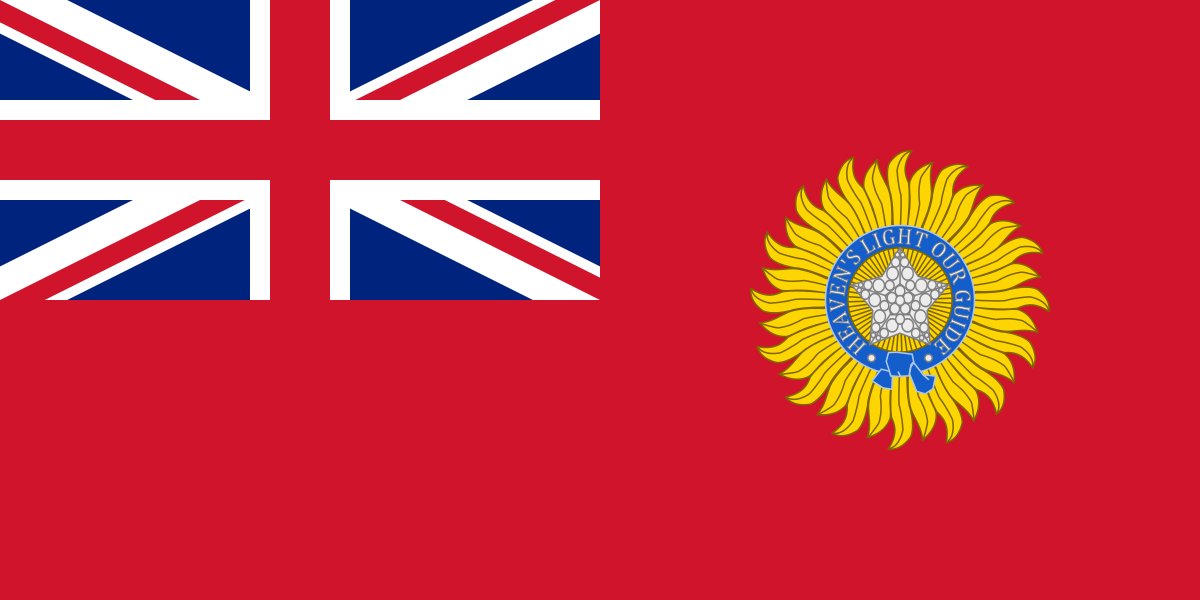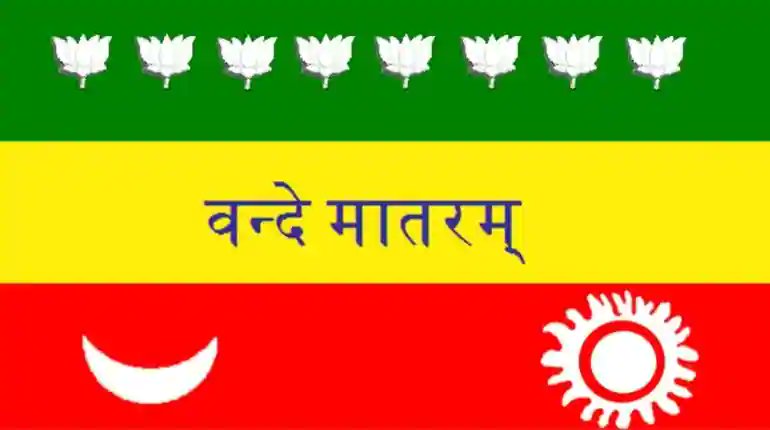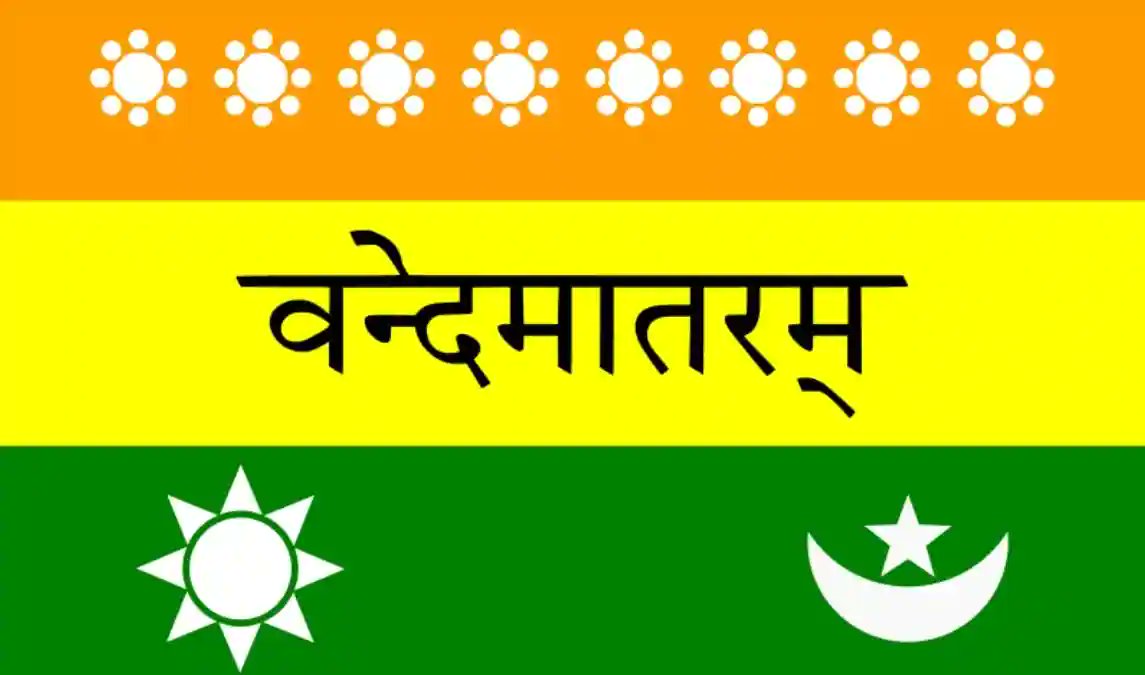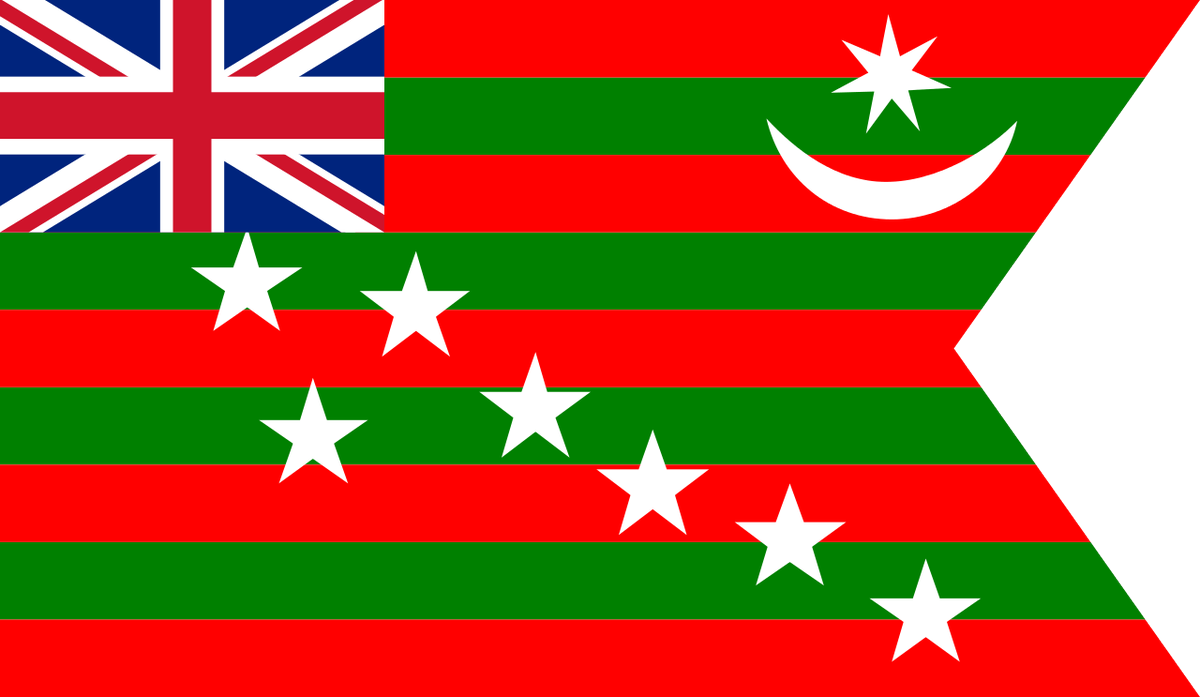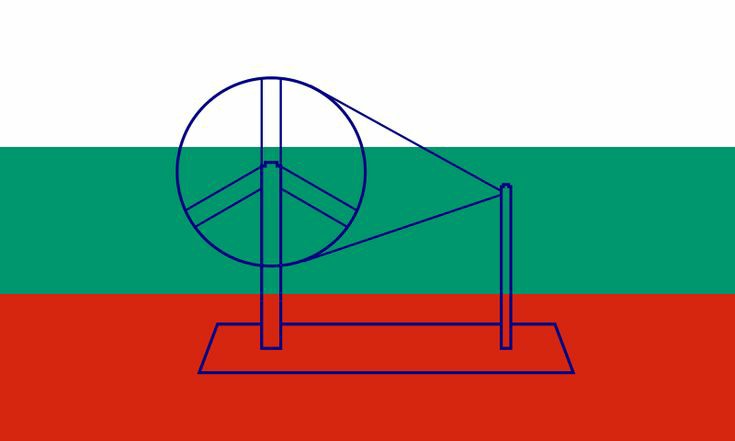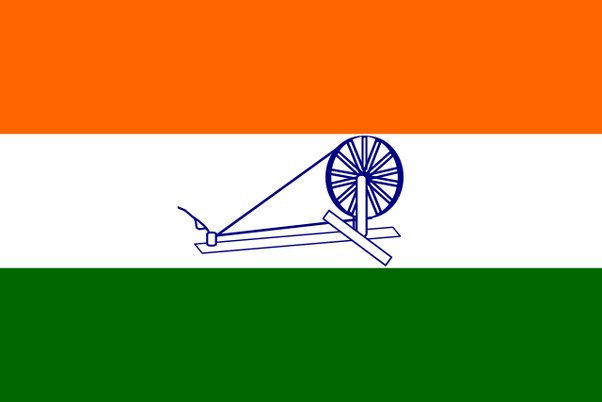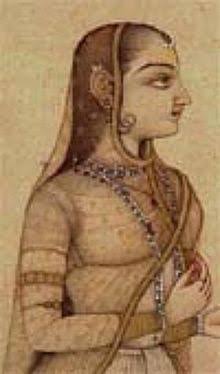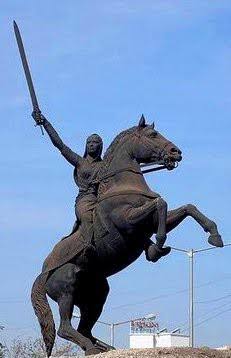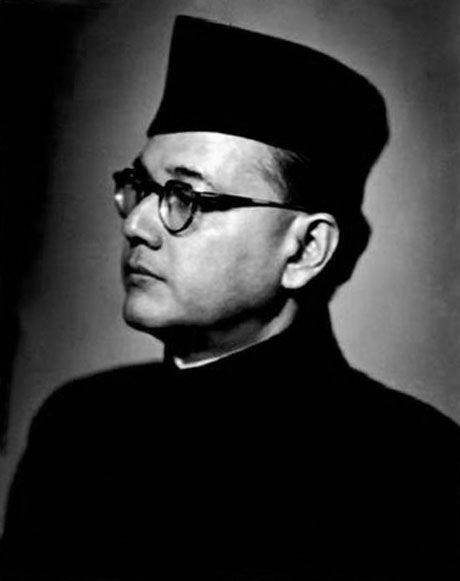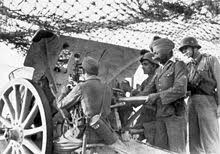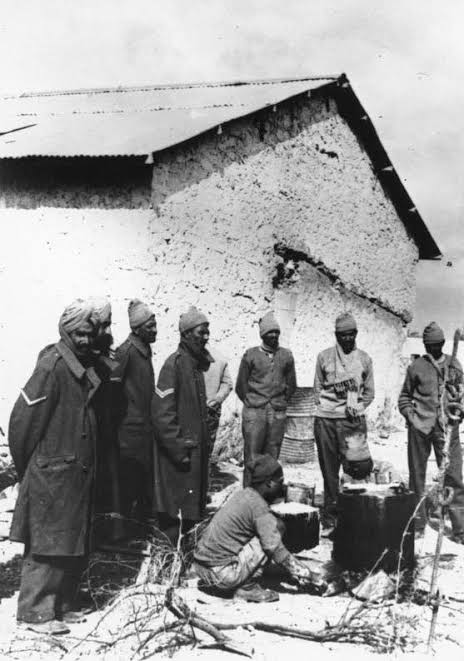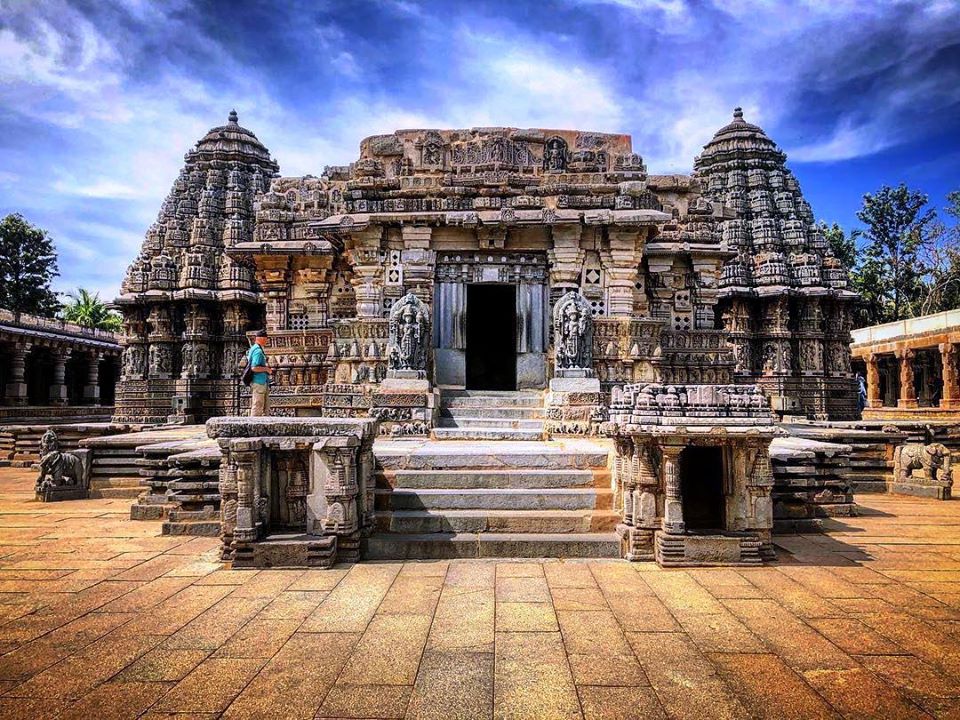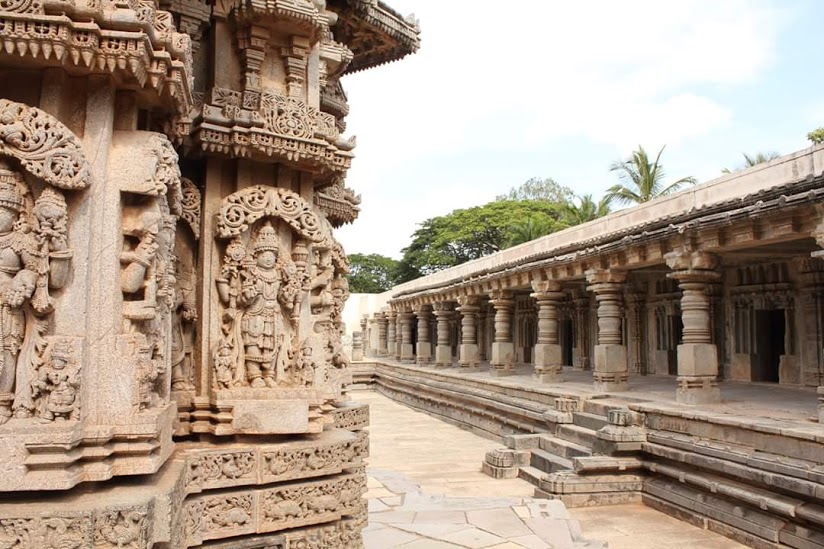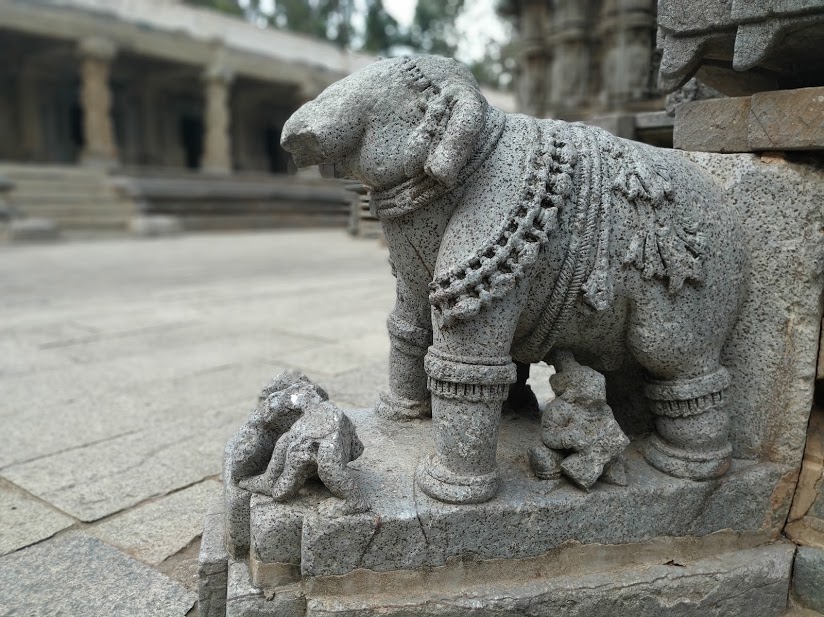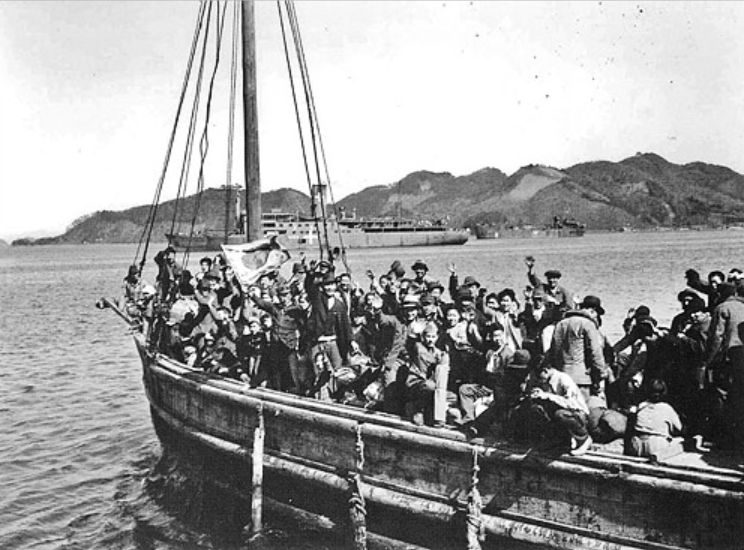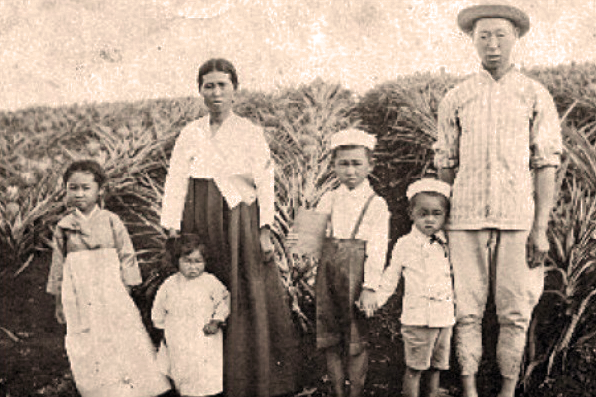After the revolt of 1857, the first Indian flag was designed. The design was based on western heraldic standards with "Union Jack" in the upper-left quadrant and a "Star of India" enclosed in the royal crown in the middle of the right half.(1)
The flag was a symbol of the direct imperial rule in India.(2)
In 1904 the first Indian flag which stood for India's independence from the British was devised. The design was provided by sister Nivedita, an Irish disciple of Swami Vivekananda.(3)
The flag was red and yellow with an image 'Vajra' (weapon of god Indra). The phrase 'Vande Mataram' was written in Bengali on it. The red colour and the yellow colour signified freedom and victory while the symbol of vajra stood for strength.(4)
In 1906 in Kolkata another flag appeared which introduced the idea of a tricolor for the first time. The flag had 3 equal strips of blue, yellow and red with eight differently shaped stars aligned in a straight line across the blue strip.(5)
'Vande Mataram' was written across the yellow part and the red part had the symbol of the sun (left) and crescent moon with a star(right).(6)
In 1906 a variation of the previous tricolor came into existence which was hoisted on August 7, 1906 at an anti-partition rally (Bengal) in Parsee Bagan Square in Kolkata.(7)
This flag is believed to have been designed by Sachindra Prasad Bose and Sukumar Mitra. It had three stripes of green, yellow and red from top to bottom.(8)
The top most green band had eight lotus flowers representing the eight provinces, the middle yellow stripe bore the words ‘Vande Mataram’ and the lowermost band had a crescent moon on the left and a sun on the right side.(9)
Then came the Berlin committee flag which was collectively designed by Madam Bhikaji Cama, Veer Savarkar and Shyamji Krishna Varma.(10)
The flag was first unfurled by Madam Cama on 22 August 1907 at Stuttgrat, Germany, attaining the status of the first Indian flag to be hoisted in any foreign land.(11)
This flag was also a tricolour with strips of orange(with 8 stars), yellow(with Vande Mataram)and green (with the symbols of the sun and the moon) placed accordingly.(12)
Another variation of the flag was released with one lotus and seven stars. The seven stars represented the "Saptarishis".(13)
Dr. Annie Besant and Lokmanya Tilak hoisted this flag during the Home rule movement. This flag had five red and four green horizontal strips arranged alternately, with seven stars in the saptarishi configuration super imposed on them.(14)
In the left hand top corner (the pole end) was the Union Jack. There was also a white crescent and star in one corner.(15)
Congress committee which met at Vijaywada in 1921 adopted a flag made up of two colours. Red and green representing Hindus and Muslims.(16)
MK Gandhi suggested the addition of a white strip to represent the remaining communities of India and the spinning wheel to symbolise progress of the nation.(17)
In 1931 a resolution was passed adopting the tricolor flag as our national flag. This flag, the forebearer of the present one, was saffron, white and green with MK Gandhi's spinning wheel at the center.(18)
It was clearly stated that it bore no communal significance. Both these spinning wheel flags were designed by Pingali Venkayya over a period of ten years.(19)
On July 22, 1947, the constituent assembly adopted the 1931 flag as free India national flag.(20)
The colours and their significance remained the same. Only the Dharma chakra of emperor Ashok was adopted in place of the spinning wheel at center of the flag.(21)
